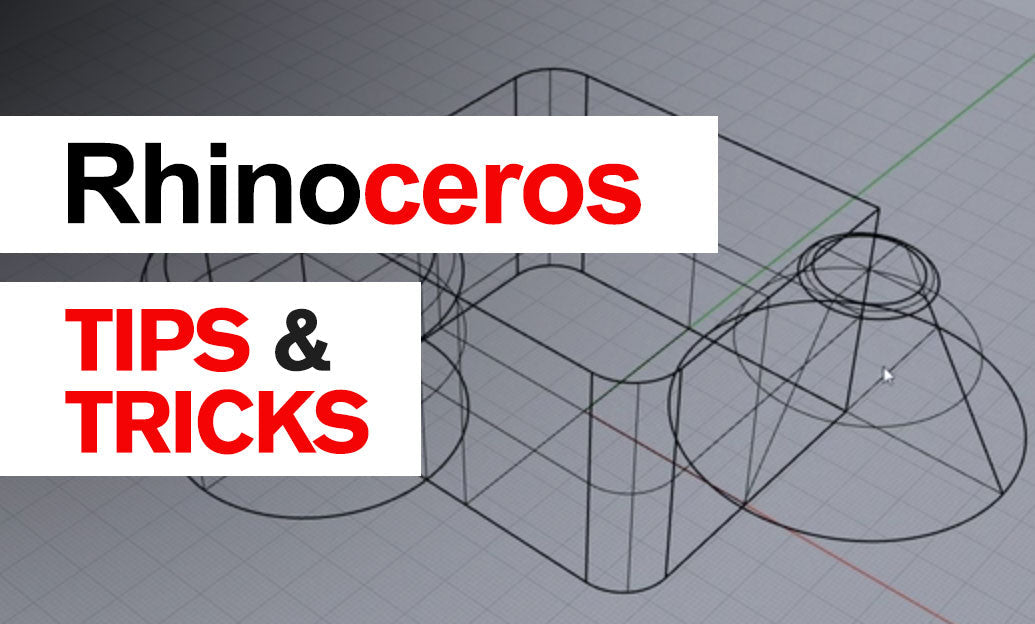Your Cart is Empty
Customer Testimonials
-
"Great customer service. The folks at Novedge were super helpful in navigating a somewhat complicated order including software upgrades and serial numbers in various stages of inactivity. They were friendly and helpful throughout the process.."
Ruben Ruckmark
"Quick & very helpful. We have been using Novedge for years and are very happy with their quick service when we need to make a purchase and excellent support resolving any issues."
Will Woodson
"Scott is the best. He reminds me about subscriptions dates, guides me in the correct direction for updates. He always responds promptly to me. He is literally the reason I continue to work with Novedge and will do so in the future."
Edward Mchugh
"Calvin Lok is “the man”. After my purchase of Sketchup 2021, he called me and provided step-by-step instructions to ease me through difficulties I was having with the setup of my new software."
Mike Borzage
Enhancing Design Efficiency with Cloud-Based CAD Solutions
January 23, 2025 8 min read


In today's rapidly evolving design landscape, professionals are constantly seeking tools that offer flexibility, efficiency, and collaboration. As the demands of projects grow more complex and teams become increasingly dispersed, traditional design methods are being re-evaluated. One such innovation that has gained significant traction is cloud-based Computer-Aided Design (CAD) solutions. These platforms promise to revolutionize the way designers work by leveraging the power of the cloud to enhance every aspect of the design process.
Definition and Overview
Cloud-Based CAD refers to Computer-Aided Design software that is hosted on remote servers and accessed over the internet, rather than being installed locally on a user's computer. Unlike traditional desktop CAD applications, which require significant computing resources and are tied to specific hardware, cloud-based solutions offer the flexibility to access design tools from any location and on any device with internet connectivity. This paradigm shift allows designers to work more fluidly, free from the constraints of physical workstations.
The evolution of CAD software towards cloud integration has been a gradual but inevitable process. Initially, CAD systems were standalone applications requiring robust hardware, limiting their accessibility. However, advancements in internet speeds and cloud computing technologies have paved the way for these tools to move online. The transition began with collaborative features and file-sharing capabilities and has now matured into fully-fledged cloud-based platforms that offer comprehensive design functionalities equivalent to, or even surpassing, their desktop counterparts.
Importance in Modern Design Workflows
The modern design workflow demands a level of flexibility and accessibility that traditional CAD solutions struggle to provide. Designers are no longer confined to their desks; they need the ability to work remotely, collaborate in real-time, and adapt quickly to changing project requirements. The growing need for flexibility and accessibility in design processes is driving the adoption of cloud-based CAD solutions. These platforms enable designers to access their projects from anywhere, whether they're in the office, at a client site, or working from home. This accessibility ensures that productivity is maintained regardless of location.
Furthermore, cloud-based solutions address current industry challenges by providing tools that facilitate better collaboration and communication among team members. As projects become more complex and involve multidisciplinary teams, having a centralized platform where everyone can access the latest design files and contribute seamlessly becomes crucial. Cloud-based CAD tools offer shared workspaces, version control, and collaborative features that are essential for efficient teamwork.
Purpose of Streamlining Workflows
Streamlining workflows is essential for enhancing efficiency and reducing bottlenecks in design projects. By minimizing unnecessary steps and automating routine tasks, designers can focus more on creativity and problem-solving. Cloud-based CAD solutions contribute to this by providing tools that simplify the design process, automate updates, and eliminate the need for manual file management. This results in faster project turnaround times and improved quality of work.
In addition to efficiency gains, cloud-based CAD platforms facilitate better collaboration among dispersed teams. With real-time collaboration tools, team members can work simultaneously on the same project, see each other's changes instantly, and provide immediate feedback. This level of interaction reduces delays caused by waiting for updates or clarifications, thereby enhancing overall project cohesion and success.
Real-Time Collaboration Tools
One of the standout features of cloud-based CAD solutions is the ability to support real-time collaboration among multiple users. Simultaneous multi-user access and editing allow team members to work on different aspects of a design concurrently, without the risk of overwriting each other's work. This collaborative environment fosters creativity and innovation, as ideas can be shared and implemented instantaneously. Designers can see the impact of changes made by colleagues in real-time, which enhances coordination and reduces the likelihood of conflicts or duplicate efforts.
Moreover, cloud-based platforms often include robust commenting and annotation features. These tools enable team members to provide instant feedback directly within the design environment. Comments can be attached to specific components or areas of the design, ensuring that feedback is precise and actionable. This not only streamlines the review process but also enhances communication by keeping all discussions within the context of the design itself.
Accessibility and Remote Work Capabilities
The ability to access designs from any device with internet connectivity is a game-changer for design professionals. Cloud-based CAD solutions eliminate the need for high-performance local machines, as the heavy computational work is handled by the cloud servers. Designers can work on complex projects using standard laptops, tablets, or even smartphones. This level of accessibility ensures that work can continue uninterrupted, regardless of the designer's physical location or device availability.
Additionally, these platforms provide seamless transitions between desktop, tablet, and mobile platforms. This flexibility allows designers to start a project on one device and continue working on another without any loss of data or functionality. For instance, a designer could sketch initial concepts on a tablet while on the go and then refine the design on a desktop workstation later. This level of convenience enhances productivity and allows for a more dynamic and responsive design process.
Integration with Other Software and Tools
In the modern design ecosystem, interoperability between different software and tools is essential. Cloud-based CAD solutions excel in this area by offering compatibility with project management, version control, and other design software. This integration ensures that data flows smoothly between different stages of the project, reducing the need for manual data entry and minimizing errors. Designers can import and export files in various formats, collaborate with teams using different tools, and maintain consistency across the project lifecycle.
Furthermore, many cloud-based CAD platforms offer API support for custom integrations. This allows organizations to tailor the software to fit their specific workflow needs. By developing custom plugins or connecting the CAD platform with proprietary systems, teams can create a unified workflow that enhances efficiency and reduces redundancy. This level of customization is particularly beneficial for specialized industries or projects with unique requirements.
Key integration features include:
- Seamless data exchange between CAD and project management tools.
- Compatibility with popular version control systems.
- APIs for building custom workflows and automation scripts.
- Support for various file formats to ensure interoperability.
Scalability and Resource Management
Scalability is a critical factor in managing resources effectively, especially for organizations that handle projects of varying sizes and complexities. Cloud-based CAD solutions provide flexible resource allocation based on project demands. Organizations can scale their computational resources up or down as needed without investing in expensive hardware. This flexibility ensures that projects have the necessary resources during peak times while avoiding unnecessary costs during slower periods.
In addition, cloud storage solutions offer dynamic capacity that grows with project sizes. As design files and datasets become larger, the storage capacity adjusts automatically, eliminating the need for manual upgrades or data migration. This ease of resource management simplifies administrative tasks and allows teams to focus on the core aspects of design and innovation. The use of cloud storage also enhances data accessibility and security, providing peace of mind for both designers and clients.
Increased Productivity and Efficiency
One of the primary benefits of streamlining workflows with cloud-based CAD is the significant boost in productivity and efficiency. By offloading computational tasks to powerful cloud servers, there is a reduction in downtime with faster rendering and processing speeds. Designers no longer have to wait for complex models to render or simulations to complete, as these processes are expedited in the cloud environment. This time savings translates to more iterations, better designs, and faster project completion.
Moreover, cloud providers handle automated updates and maintenance. This means that design teams always have access to the latest features and security enhancements without the need for manual installations or system downtime. It eliminates the disruptions associated with software updates and ensures that all team members are using the same version of the software, which is critical for compatibility and collaboration.
Cost Savings and Resource Optimization
From a financial perspective, cloud-based CAD solutions offer substantial cost savings. Organizations can achieve lower upfront costs by eliminating the need for high-end hardware. Since the heavy lifting is done in the cloud, there is less need to invest in expensive workstations or servers. This reduction in capital expenditure is particularly beneficial for startups or companies looking to manage their budgets more effectively.
Additionally, many cloud-based platforms operate on pay-as-you-go models. This means that expenses align with actual usage, allowing organizations to optimize their resources. They only pay for the computational power and storage they use, which can lead to significant savings over time. This model also provides the flexibility to scale resources up or down based on project requirements, ensuring that funds are allocated efficiently.
Cost-saving benefits include:
- Reduced capital expenditure on hardware and infrastructure.
- Lower maintenance and IT support costs.
- Elimination of software licensing fees for individual machines.
- Flexibility to adjust subscription levels based on team size and project load.
Improved Communication and Collaboration
Effective communication and collaboration are essential for the success of any design project. Cloud-based CAD solutions enhance team coordination through centralized design repositories. All files are stored in a single location that is accessible to all team members, ensuring that everyone is working with the most up-to-date information. This centralization minimizes the risk of miscommunication caused by outdated files or conflicting versions of a design.
Furthermore, these platforms make it easier to share files and updates. Designers can quickly invite team members or external stakeholders to view or edit designs, with permissions set to control access levels. This ease of sharing reduces the barriers to collaboration and allows for more inclusive participation in the design process. By streamlining communication channels, teams can resolve issues faster and make more informed decisions.
Enhanced Data Management and Version Control
Data management is a critical aspect of design workflows, especially when dealing with complex projects and large teams. Cloud-based CAD solutions offer robust features for automatic backups and data recovery options. This ensures that work is not lost due to hardware failures or accidental deletions. The cloud environment provides a secure and reliable platform for storing valuable design data.
Another significant advantage is the availability of detailed version histories. Designers can track changes over time, see who made specific modifications, and revert to previous versions if necessary. This level of version control is invaluable for maintaining the integrity of the design process and for auditing purposes. It also facilitates better collaboration, as team members can understand the evolution of a design and build upon each other's work more effectively.
Recap of Key Points
In summary, cloud-based CAD solutions offer a transformative approach to design workflows by leveraging the benefits of collaboration, accessibility, integration, and scalability. They provide tools that support real-time collaboration, enabling teams to work together more effectively. By offering accessibility from any device, designers can maintain productivity regardless of their location. Integration capabilities ensure seamless workflows across different software and tools, while scalability allows organizations to manage resources efficiently as project demands fluctuate. Collectively, these features contribute to streamlined workflows that enhance efficiency and drive innovation in design projects.
Future Trends in Cloud-Based CAD
Looking ahead, the landscape of cloud-based CAD is poised for further innovation. Emerging technologies such as artificial intelligence (AI) integration are expected to play a significant role in automating routine tasks, providing predictive design suggestions, and enhancing simulation capabilities. Additionally, augmented reality (AR) enhancements will offer immersive experiences, allowing designers and stakeholders to visualize and interact with 3D models in real-world environments. These advancements will further amplify the benefits of cloud-based CAD, making it an indispensable tool in various design industries.
Predicted growth and adoption rates indicate that cloud-based CAD solutions will continue to gain traction across architecture, engineering, manufacturing, and other sectors. As organizations recognize the competitive advantages offered by these platforms, adoption is expected to accelerate. This growth will likely spur further investment and development in cloud technologies, leading to even more sophisticated and powerful design tools.
Final Thoughts on Adoption
For organizations seeking to stay ahead in a competitive market, transitioning to cloud-based CAD is a strategic move. The advantages in terms of efficiency, cost savings, and collaborative capabilities provide a compelling case for adoption. By embracing these technologies, companies can foster a more agile and innovative design culture that is better equipped to meet the challenges of modern projects.
When considering the shift to cloud-based CAD, it is essential to select the right cloud platform that aligns with specific workflow needs. Factors such as scalability, integration capabilities, security features, and support services should be evaluated. Organizations should also consider pilot programs or phased implementations to ensure a smooth transition. Ultimately, adopting cloud-based CAD solutions positions organizations to leverage cutting-edge technologies and maintain a competitive edge in the ever-evolving design industry.
Also in Design News

Cinema 4D Tip: Cinema 4D Speed‑Modeling Workflow for Architectural Scenes
December 30, 2025 2 min read
Read MoreSubscribe
Sign up to get the latest on sales, new releases and more …




